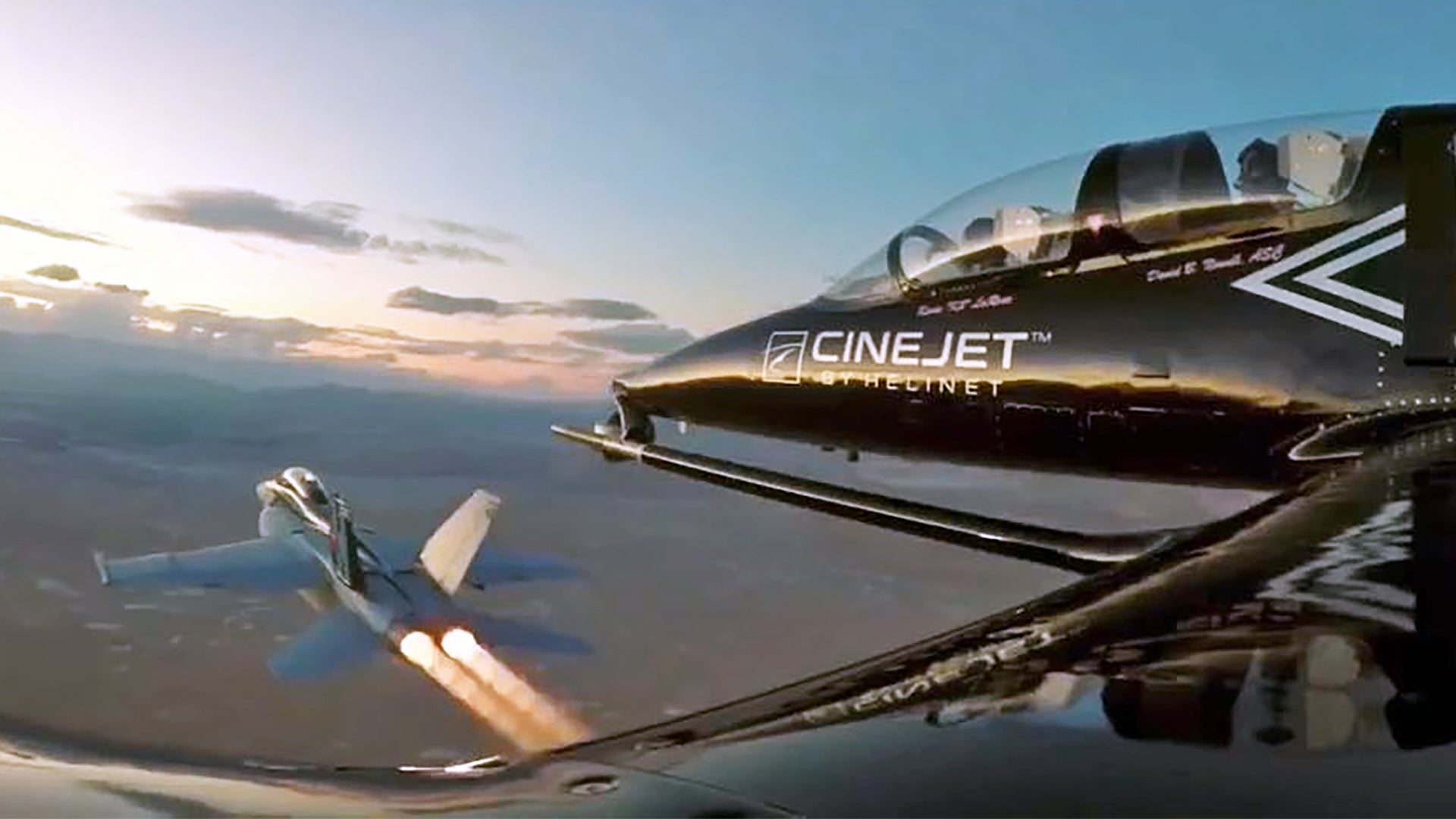Last week, just two days after the release of the second trailer for Top Gun: Maverick, we were treated a behind the scenes featurette about the work that went into capturing the movie’s flying sequences. At the time, we were concerned that the air-to-air engagements would be largely rendered in CGI, but a recent Facebook post from Kevin LaRosa II, the Aerial Coordinator and Lead Camera Pilot for the film, has allayed much of that fear and offered details on the four different platforms, including drones, that he and his team used to capture the aerial magic we will see on screen.
You can read LaRosa’s post in full below:
“I used four different types of camera platforms on Top Gun Maverick. As the Aerial Coordinator and Lead Camera Pilot, each platform was chosen with the help of both Aerial DP’s (Michael FitzMaurice & David Nowell) for a specific purpose for each individual aerial sequence.
The L-39 CineJet was chosen for most of the dog fighting and low level high energy type flying. The Phenom Camera Jet with my Co-Captain @jonathan_spano was chosen for any extended over water operation, extended range missions, or complex sequence that needed the flexibility of carrying two Shotover F1’s at the same time with different lens capabilities. The Helinet camera helicopter was used to capture all of the high energy passes and low level action with the Shotover K1 attached by an Airfilm Camera Systems AF200. The fourth platform was Helinet Aviation cinema drones which were able to operate in places we couldn’t get full size camera aircraft.
All of these amazing platforms carried state of the art SHOTOVER camera gimbals. The gimbals and accessories were supplied by both @helinetaviation and Team5 Aerial Systems. There is so much fantastic footage that I can’t wait for the world to see. Really looking forward to this summer when the movie is released! @k2_larosa #AerialCoordinator #StuntPilot #AerialDepartment @helinetaviation @team5aerials @shotovercamera #TeamWork @paramountpics @tomcruise @glenpowell @monicabarbaro @gregtarzandavis @jaredslater @scherbas”
So, there you have it. At least some of the dogfighting in the movie will be footage of actual air-to-air engagements. We had already seen one of CineJet’s L-39s in the featurette filming an F/A-18E/F Super Hornet as it goes into full afterburner. That’s exactly the kind of “high energy type flying” footage that LaRosa said his team used the L-39 to grab.
It’s very interesting to see the kind of additional platforms that the aerial team used to capture all of the in-air footage. The use of smaller drones is hardly surprising given how unmanned platforms are increasingly valuable for various commercial enterprises, especially when it comes to any task that involves getting into hard to access areas, just as LaRosa says.
All told, LaRosa’s brief, but detailed post highlights the very hard work that goes into making this kind of specialized movie magic without defaulting to computer-generated imagery. We already know that the filming of the original Top Gun more than three decades ago was particularly challenging and potentially risky given how close the camera aircraft had to fly to the fighter jets they were filming.
Back in 2016, Dave “Bio” Baranek, a F-14 Radar Intercept Officer who was a real Topgun instructor and took part in the filming of Top Gun, told The War Zone the following in an interview:
“In basically every scene, we had to fly closer to each other for the cameras than we would in real life. When we were filming the head-on passes, it took quite a few passes to get it right [detailed in awesome fashion in Topgun Days]. In our dogfight training, when we had a head-on pass we were required to stay 500 feet away from the other jet for safety. That was a distance we were all comfortable with, even if we were closing at Mach 1! But when we tried it for the movie the other jets looked too small, so the director wanted us to get closer than 500 feet. We talked about it and reasoned that under the controlled filming conditions we could close the distance. It still took several passes to refine the formations and other things, and we eventually passed close enough to hear the other jets—a rarity.
The flight leads and all the aircrew kept it professional, in the briefings and during the flights. The main flight lead for the F-14s was Lloyd “Bozo” Abel, while Bob “Rat” Willard and Ray “Secks” Seckinger took turns leading the Topgun jets. From the Navy’s safety-conscious culture, we knew that unusual flights such as air shows present high risk because it’s not the way we normally fly. So the movie crew would tell us what they wanted and the flight leads would work out how we could safely accomplish it. Then the briefings were very thorough. No one wanted to mess up while filming a Hollywood movie.”
Be sure to read the rest of that interview, if you haven’t already, here.
Knowing what we know now about the aerial filming for Top Gun: Maverick, we are even more excited to see the exhilarating new footage and feel that need for speed all over again.
Contact the author: Tyler@thedrive.com
